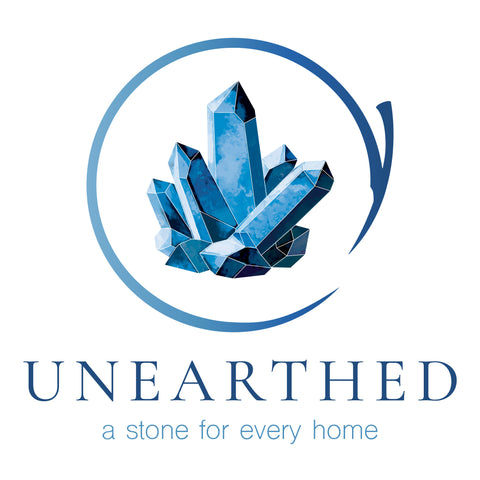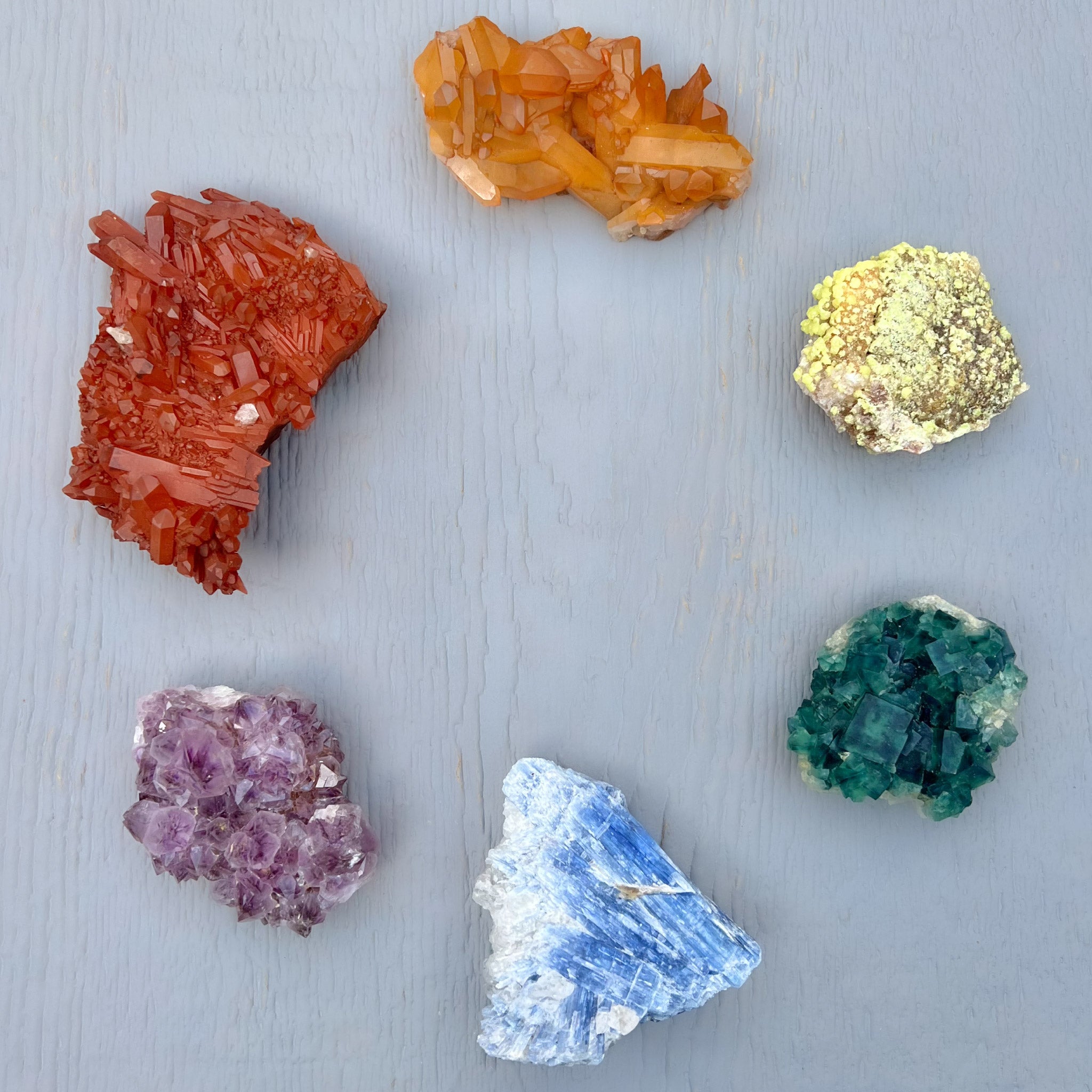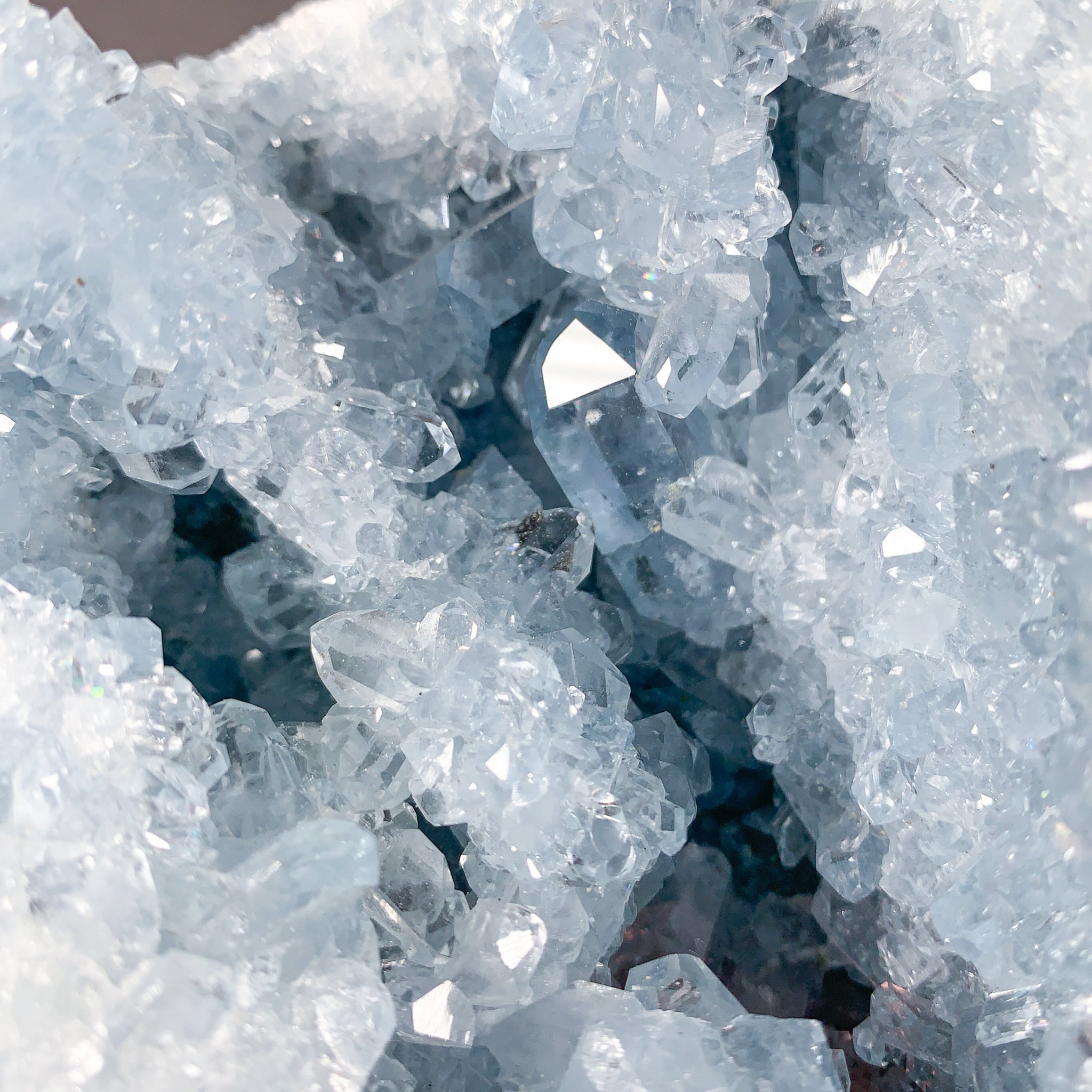What is the Difference Between Quartz and Calcite?
Learn how to identify the differences between these two amazing minerals!
Quartz and Calcite are two very common minerals that can easily be found on the crystal market. You might even be lucky enough to stumble across some while out for a hike! But for being two very different minerals, why are they so often confused for one another? If you've ever guessed a Quartz is a Calcite, or a Calcite is a Quartz, you're not alone. Many beginner collectors struggle differentiating these two.
But don't fret, that's what we're here for! We'll be examining how Quartz and Calcite are similar, how they are different, and what makes each so special!
Why do Quartz and Calcite look so similar?
Quartz and Calcite are often confused for one another because they are both common minerals. They are geologically abundant, meaning it is not only common to see them on the mineral market in countries from around the globe, but you might even run into them while out for a hike!
It is also easy to confuse them on their color, as both Quartz and Calcite typically form in white or clear crystals. To a novice, their shapes may even be confusing.
But there are some important and distinct differences that make them both distinguishable and easier to identify.
How can you tell the difference between Quartz and Calcite?
When a Geologist or rockhound is out in the field, there are a variety of tools, tricks, and tests that can be done to help identify an unknown mineral. Here's a few methods for identifying the differences between Quartz and Calcite:
Color
This is typically the first thing that catches our eye about a mineral or crystal specimen. The striking color of many minerals can be an easy and quick ID, especially for Malachite which is always green, or Azurite which is always blue.
But the color for many minerals is HIGHLY variable, especially with Quartz and Calcite. With minor elemental inclusions, Quartz and Calcite can also form in a variety of other colors such as red, blue, green and gold. For Example: Rose Quartz is a pink variety of Quartz, Amethyst is purple Quartz, Smoky Quartz is black or brown, Citrine is a yellow Quartz, and so on.
Similarly, Calcite can be red, golden, emerald, etc. Because Quartz and Calcite can form in a variety of different colors, going on basic visual aids like color alone may not be enough to properly ID the specimen.
So what do we look at when color just won't suffice?
Hardness
Hardness is the specimens ability to resist scratching or abrasion. The hardness value is based upon a scale called the Moh's hardness test, which ranges from 1 (softest) to hardest 10 (hardest). The scale is as follows:
Moh's Hardness
1 Talc
2 Gypsum
3 Calcite
4 Fluorite
5 Apatite
6 Orthoclase Feldspar
7 Quartz
8 Topaz
9 Corundum
10 Diamond
Each mineral in the Hardness scale can scratch a mineral with the same number, or numbers lower than itself. Similarly, it can be scratched by any mineral with a number higher than itself. For example: Topaz can scratch Quartz, but Topaz cannot be scratched by Quartz because Quartz has a lower hardness value.
As you can see on the chart above, Calcite has a hardness of 3, and Quartz has a hardness of 7. That means Calcite is significantly "softer" than Quartz, and could easily be scratched by a knife, whereas Quartz could not.
Crystal Shape
While both Quartz and Calcite fall into the Hexagonal crystal class and can form in massive (blob shaped, undefined crystal) varieties, the typical shapes they form in are quite different. Quartz crystals typically have a well defined hexagonal (6-sided) shape, with prismatic crystals that are striated crosswise. Calcite crystals typically form in rhombohedrons, scalenohedrons, or tabular or stalactitic varieties. Check out our blog on Crystal Shapes for a refresher.
Quartz Crystal Displaying Cross-wise Striations
Chemistry
Quartz is a Silicon Dioxide with a chemical formula of SiO2. Calcite is a Carbonate mineral with a chemical formula of CaCO3. Because of its chemistry, Calcite effervesces (fizzes) when exposed to even weak acids.
Cleavage
Cleavage is the tendency a mineral has to break along one or more regular or smooth surfaces. While Quartz generally does not display a distinct cleavage, Calcite has perfect Rhombohedral cleavage. Meaning if you were to break a piece of crystalline Calcite, you would in theory, end up with a nice rhombohedral shape.
Calcite Crystal Displaying Rhombohedral Cleavage
What are the Similarities and Differences Between Quartz and Calcite?
The chart below provides a helpful recap of both the similarities and differences between these two important minerals.

Conclusion
While it can be easy to initially confuse these two geologically abundant and awesome minerals, hopefully with the information you gained here you can now identify them both while shopping or while out in the field! Happy rockhounding :)






